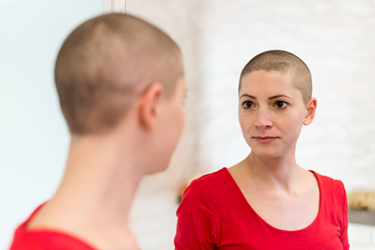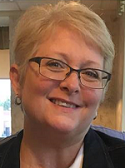The Patient Perspective On Patient Centricity: Insights From A Veteran Of 5 Clinical Trials
By Lori Abrams

Those who know me understand the value I put on bringing the voice of the patient and caregiver into the drug development process. They also know that I believe that today’s terminology — phrases like “patient-centricity,” “patient at the center,” and other sexy mottos — is sometimes used by organizations to show the world that the patient is at the forefront of everything they do. But are they really? Is patient feedback on a protocol enough to prove that their voices are heard? Is providing input on an informed consent what a patient really wants to do? Maybe.
How often has an organization asked the patient and caregiver how they would like to contribute to a drug development program? If they could do anything to help bring a drug to the market, what would that look like? Moreover, if a trial participant could provide ongoing feedback that improved the patient experience, what would they contribute, and how might the trial change?
Let’s try it now. I am humbled to introduce readers to Amy Butler. Together, we are going to try to shed some light on the drug development process from the perspective of a brave woman who has participated in five clinical trials. First, a brief summary of Amy’s experience…
Amy was a medical assistant for a large obstetrics and gynecology practice near her home in McHenry, IL, where she lives with her husband and two children (along with two cats, a quacker parrot, and a corgi puppy). Advocacy has always been a part of her life, as she has a brother who is developmentally disabled. But she never expected that her biggest challenge as an advocate would be to try to save her own life.
In 2014, at 44 years of age, Amy was diagnosed with stage IV colon cancer with metastasis to the liver. At the Mayo Clinic, she had a right hemicolectomy and liver resection, along with a prophylactic hysterectomy because she discovered through genetic testing that she had a CHEK2 variant. She underwent six months of Folfox chemotherapy with Avastin and was deemed cancer-free. Nine months later, a follow-up scan revealed that she had metastatic disease in both lungs. She began Folfiri with Avastin; however, after about 10 months, scans started showing progression in her lungs.
Against her Mayo Clinic oncologist’s advice, she began looking into clinical trials. Fortunately, her support group Colontown (see related article) provided her with science-based information about clinical trials. Her local oncologist referred her to the University of Chicago. Over the next two years, she participated in four clinical trials. Three of the trials were immunotherapy in combination with other drugs and one was an antibody trial. Due to progression, she returned to her local oncologist and revisited standard chemotherapy for a few months, with no success. Recently, Amy was approved to start her fifth clinical trial.
Amy was kind enough to answer my questions about her journey, providing an unvarnished look at clinical trials from a patient’s perspective and shedding light on aspects of the clinical trial process in desperate need of improvement.
Lori Abrams: You were at the Mayo Clinic and clinical trial participation was not supported. Can you describe what occurred and why?
 Amy Butler: I was at Mayo Clinic for a follow-up visit and my oncologist was going over my latest CT scan results. The scans showed that my cancer was progressing while on Folfiri chemotherapy. Upon hearing this news, I told my oncologist that I thought it was time to look into clinical trials. He didn’t agree with me. His recommendation was I should take a break from chemotherapy, as I was completely worn out from treatment. He felt that after a month off I would be strong enough to start treatment again in hopes of keeping my cancer at bay. Knowing that I had a mutation in the KRAS gene, I understood that I had fewer treatment options and this terrified me. I didn’t want to settle; I wanted more options. After further discussion, I was told that Mayo Clinic had no clinical trials to offer me and there was no mention of any other facilities that I should consult with.
Amy Butler: I was at Mayo Clinic for a follow-up visit and my oncologist was going over my latest CT scan results. The scans showed that my cancer was progressing while on Folfiri chemotherapy. Upon hearing this news, I told my oncologist that I thought it was time to look into clinical trials. He didn’t agree with me. His recommendation was I should take a break from chemotherapy, as I was completely worn out from treatment. He felt that after a month off I would be strong enough to start treatment again in hopes of keeping my cancer at bay. Knowing that I had a mutation in the KRAS gene, I understood that I had fewer treatment options and this terrified me. I didn’t want to settle; I wanted more options. After further discussion, I was told that Mayo Clinic had no clinical trials to offer me and there was no mention of any other facilities that I should consult with.
Abrams: How did it feel when you were not offered alternative options to standard care by your Mayo oncologist? What were your next steps?
Butler: It was terrible; I felt so alone. Here I was at one of the country’s premier medical facilities, and all I’m offered was to continue standard of care chemotherapy, even though it clearly wasn’t working anymore. My next step was to see my local oncologist and discuss my recent scans with him. This conversation was quite different from my conversation at Mayo Clinic. My local oncologist really listened to my concerns about continuing with the same chemotherapy treatments and when I asked him about clinical trials, he was on board. I walked out of that appointment with a referral to the University of Chicago. Two weeks later, I was signing a consent form for my first clinical trial.
Abrams: How and when did you find Colontown?
Butler: When I was diagnosed with stage IV colon cancer in 2014, I followed all the rules. One of those rules was to stay off the internet. In 2016, when I learned that the cancer had metastasized to my lungs, I threw that rule out the window and began looking for answers. I came across a blog called Adventures in Living Terminally Optimistic by Tom Marsilje. Tom was an oncology researcher who was also diagnosed with colon cancer at a young age. I was inspired by Tom’s blog; it filled me with hope again. On his blog, Tom mentioned many colon cancer support groups. I was overwhelmed with the amount of support out there. I couldn’t believe that my doctors never mentioned or recommended them.
I contacted Tom and we had a great discussion about new treatments coming for colon cancer patients. He talked to me about the different support groups and recommended that I join Colontown.
Abrams: Colontown helped you understand clinical trials. What type of information did they provide? Did they provide navigation to clinical trials? How did they help you to better understand your disease?
Butler: Colontown became my lighthouse in the dark. First, let me explain how Colontown works. When you join Colontown, the administrators invite you to join private patient-lead neighborhoods. Each neighborhood is based on the stage, tumor mutations, and metastatic disease. The clinical trial neighborhoods are broken down into groups based on microsatellite instability (MSI) status as well as mutations.
Through Colontown, I was educated about what my MSI status (mine being microsatellite stable, or MSS) and my KRAS mutation meant. Not only was I able to grasp my disease, I also met wonderful people who were going through the same thing. Within the MSS clinical trial neighborhood there is a link to the Late Stage Trial Finder that was curated by Fight CRC and created by Marsilje, a scientist and Colontown member.
Abrams: You have participated in five clinical trials. Were you asked to provide feedback (good or bad) before, during, or after your participation?
Butler: The answer to this is a resounding no. The only feedback I’m asked to provide is what my side effects are during treatment.
Abrams: If you could be an advisor to drug development process at a company, what would that look like?
Butler: I believe that a patient has the right to know the results of any specialized testing that was done. I’ve had to have multiple lung biopsies in clinical trials, and I wasn’t told why or what they were looking for. I’ve had blood draws where 15 tubes of blood were taken, and I have no idea if anything interesting was found. I think patients deserve to get some results. Pharmaceutical companies should issue symptom diaries for the trials because a patient may forget how they were feeling by the time of their next appointment. A patient wants to know how their participation helped in the clinical trial.
Abrams: Were the results of the first four studies shared with you after the study closed? Did any of the sites ever reach out with results?
Butler: No; sadly, I’ve never heard any results from the clinical trials I’ve participated in. I feel that the facility site should get the results and share it with the patients who participated in them.
Abrams: Would you describe some of the best practices that made you feel safe, valued, and appreciated at a clinical trial site?
Butler: The facilities’ nurse navigators are amazing. They are your sounding board and liaison between the patient, doctors, and pharmaceutical company. The nurses who administer the treatments are some of the kindest people that I have ever met. In one of the clinical trials I participated in, I was required to stay near the facility for 10 days for daily blood draws. This meant that I couldn’t go home because I lived too far away. When I went to the clinic on a Saturday for my blood draw, one of the nurses brought her puppy and they were waiting outside for me. She knew that I was homesick, and her cuddly puppy gave me the boost I needed to get through my stay.
Abrams: Conversely, would you describe experiences that made your participation difficult and or frustrating?
Butler: Overall, the waiting time is the most frustrating part of participating in a clinical trial, especially in the larger clinics. The waiting time between the signed consent and the start date, time spent sitting in waiting rooms for blood draws and CTs, and anxiously waiting for test results.
Abrams: If you could provide feedback to a sponsor (pharmaceutical company) on how to design and execute a better clinical trial for people with cancer, what would you tell them?
Butler: I would ask the pharmaceutical companies to send surveys to the treatment sites for patients to fill out periodically. This would give the patients an opportunity to give their opinions while still remaining unidentified. I would like the sponsors to make it easier for the patients to get results of the clinical trial that they participated in.
Abrams: Have you heard the phrases I mentioned above? Patient-centricity, patient at the center, etc.? What do they mean to you?
Butler: Yes, I am familiar with those terms. For me, patient-centricity means that I have some control in my clinical trial journey. Not only am I being treated, but I am being cared about. I’m not just a number.
Abrams: Amy, what do you want people to know about clinical trials and/or participating in clinical trials that we have not discussed?
Butler: I think that clinical trials should be part of the discussion early on in a patient’s cancer journey. Too many patients are waiting until it’s too late to start clinical trials because they are made to feel that it’s taboo to bring it up to their oncologist. I want the pharmaceutical companies to never lose sight that we are people who are desperately trying to beat cancer, or at least be able to live longer with cancer. We can’t afford to waste time.
Abrams: This is Amy’s journey, not mine. Therefore, Amy will provide the ending to this article. I hope you have been touched by Amy’s words, strength, and courage. Together, we can continue to improve clinical research for the patients. They are our friends, our family members, and ourselves.
Butler: Although my participation in clinical trials has not cured me, I do believe they have extended my life. I was given a 30 percent chance to live five years when I was diagnosed, and here I am almost five years later. My disease has recently taken a dark turn, as I just learned that my fifth clinical trial has failed. My tumors have grown and now I have bone involvement. My treatment options are dwindling, but I refuse to give up because when it gets down to it, I just want to live.
Postscript: On the day of discontinuation of clinical trial No. 5, Amy decided that going back to a standard course of therapy was not going to be her path. She inquired about an NIH clinical trial. The oncologist agreed that this was a good idea. Once again, Amy left a doctor’s office with a good idea, but without a referral or contact name or number. However, there is good news. The following week, she was screened for a trial at NIH, and eight days later, she was accepted to be a patient participant.
About The Author:
 Lori Abrams is senior director of Patient Advocacy, a new division at WCG Clinical. She previously was in R&D at Bristol-Myers Squibb for 20 years, the last five as director of Diversity and Patient Engagement. This group integrated the voice of the patient and caregiver into the clinical trial process, developed relationships in the disease-based and minority-focused communities, and helped colleagues understand the challenges of those living with diseases. You can email her at labrams@wcgclinical.com.
Lori Abrams is senior director of Patient Advocacy, a new division at WCG Clinical. She previously was in R&D at Bristol-Myers Squibb for 20 years, the last five as director of Diversity and Patient Engagement. This group integrated the voice of the patient and caregiver into the clinical trial process, developed relationships in the disease-based and minority-focused communities, and helped colleagues understand the challenges of those living with diseases. You can email her at labrams@wcgclinical.com.
